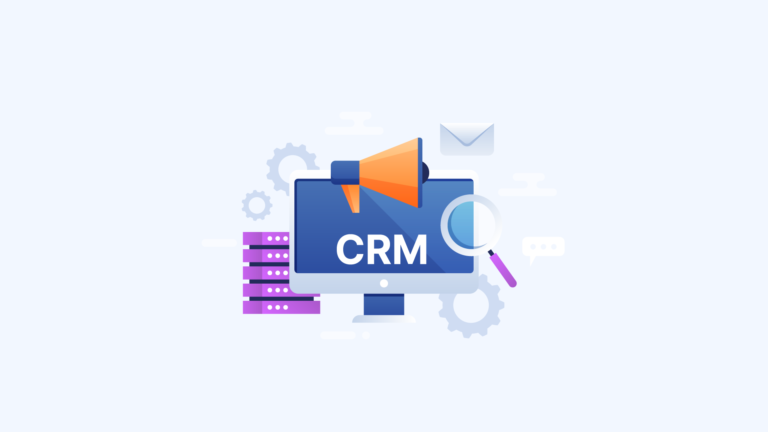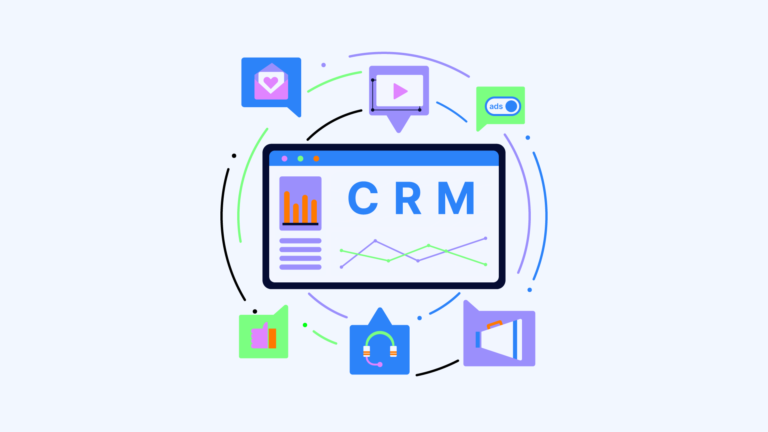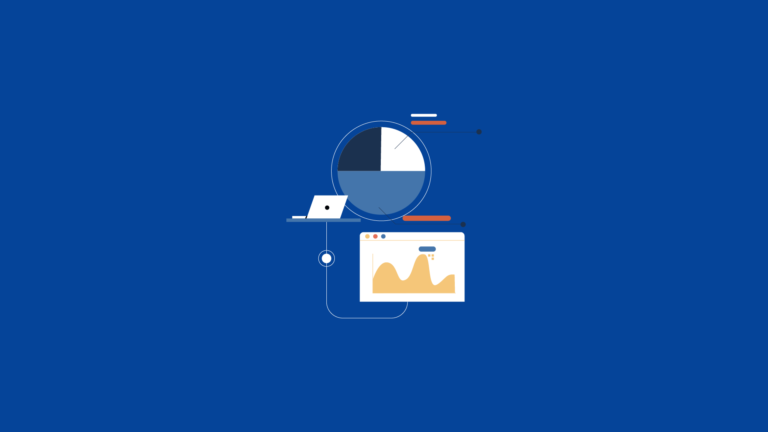|
Getting your Trinity Audio player ready...
|
Customer data remains one of the most valuable resources a company can have. By better understanding current and prospective customers, a company can provide more personalized attention and better strategize marketing.
CRM integration helps in mapping and optimizing the customer journey, allowing businesses to understand and enhance every interaction with their customers.
Recording, aggregating and managing customer data efficiently is a challenge for many organizations even when using customer relationship management software. That’s where CRM integration comes in. It increases functionality of your CRM software.
The use of CRM integration has become increasingly common when it comes to managing customers’ data. This is because managing complex customer information can be a challenging task for any business.
Having a cohesive and integrated CRM system allows businesses to easily organize, track, analyze and understand the data associated with existing and prospective customers. In addition, they can use this data to provide more personalized customer service that is tailored to their specific needs.
A CRM integration allows you to connect your CRM software with other applications, such as email marketing tools, surveys, chatbots and more.
This connection helps you capture valuable customer data that can be used to understand customers better and optimize operations.
By combining different systems, databases and information streams into one integrated CRM platform, companies are able to better strategize their marketing efforts and build ongoing relationships with their customers.
Data such as purchase history or demographic information can then be analyzed in order to gain valuable insights into what techniques are most successful in converting prospects into satisfied long-term customers.
This blog explores what a CRM integration is, its benefits, and how you can make use of it in your business.
What is Customer Relationship Management (CRM)?
Customer Relationship Management (CRM) is a strategic approach designed to manage a company’s interactions with current and potential customers.
By leveraging technology, CRM systems help businesses organize, automate, and synchronize their sales, marketing, and customer service activities.
The primary goal of CRM is to enhance customer satisfaction, foster customer loyalty, and ultimately drive business growth.
By using customer segmentation to understand and anticipate customer needs, businesses can create more personalized experiences, leading to stronger customer relationships and increased customer retention.
What Is CRM Integration?
CRM integration is the process of integrating the capabilities of a CRM system into other aspects of a business’s workflow. CRM tools have evolved to support various business functions, making integration essential for maximizing their potential.
For example, an enterprise might choose to connect their web store to their CRM in order to create personalized product recommendations as customers browse their site or post-checkout emails with relevant recommendations based on purchase history stored in the CRM system.
Other potential uses for CRM integration might include synchronizing customer profiles between different systems through data synchronization and automatically capturing lead information from forms on external websites.
Its just about anything that will extend the reach and efficacy of the CRM beyond its core use cases.
Regardless of what type of integration is employed, though, it all serves one ultimate purpose: to make sure businesses are better equipped to serve their customers based on richer informational insights.
Customer Relationship Management Software Explained
CRM software, or Customer Relationship Management, is a system that businesses utilize in order to improve customer experience. The CRM operates by collecting data on customers and all of their interactions with the business.
This data can be used to help create more personalized experiences for customers as well as promote upsells and cross-sells, thereby enhancing customer retention. From improved sales conversion rates to faster customer service turnaround, CRM systems can drastically improve overall operations if implemented correctly.
Customer Relationship Management (CRM) is a practice that utilizes both strategies and technologies for managing customer relationships and maintaining customer interactions.
By collecting information from initial contact with prospects, leads, sales, post-sale interactions and retaining customers it forms an organized data base which can be used by businesses for better and faster access.
The CRM software is a centralized platform designed specifically to store customer related data such as contact details, account information or sales figures in one set of databases.
It helps businesses to use their stored data properly and more effectively by providing timely customer service.
Some of the best CRM software can either be installed on the company server giving them full control over the program and associated data or be taken as a subscription-based service allowing businesses to access it from remote locations.
It further simplifies processes like connecting customers with one another, adding value through understanding the customer needs better as well as providing personalized services leading more profitable engagements that sets apart the business models in this competitive environment.
Benefits of CRM
Implementing a CRM system can bring numerous benefits to an organization. Some of the most significant advantages of CRM include:
Improved Customer Satisfaction: By leveraging customer data, CRM systems enable organizations to better understand their customers’ needs and preferences. This understanding allows businesses to provide personalized services, leading to higher customer satisfaction.
Increased Sales: CRM systems help sales teams analyze customer behavior and data to identify new sales opportunities. This targeted approach can significantly improve conversion rates and drive revenue growth.
Enhanced Customer Loyalty: Building strong relationships with customers is crucial for long-term success. CRM systems facilitate this by enabling organizations to maintain consistent and meaningful interactions, fostering customer loyalty and retention.
Better Decision Making: With access to valuable insights into customer behavior and preferences, organizations can make informed decisions about their sales and marketing strategies. This data-driven approach ensures that resources are allocated effectively and goals are met.
Improved Collaboration: CRM systems promote better collaboration among sales, marketing, and customer service teams. By sharing customer data and insights, these teams can work together more effectively, ensuring a cohesive approach to managing customer relationships.
CRM Features and Types
CRM software comes equipped with a variety of features that cater to different business needs throughout the customer lifecycle. Key features include contact management, sales force automation, marketing automation, and customer service and support.
These tools help businesses manage customer data efficiently and streamline their operations.
There are three main types of CRM systems:
Operational CRM: Focuses on automating sales, marketing, and customer service processes. It helps manage customer interactions and streamline business operations.
Analytical CRM: Provides insights and analysis of customer data. It helps businesses understand customer behavior and preferences, enabling data-driven decision-making.
Collaborative CRM: Enables different departments within a business to share customer information and work together to provide a seamless customer experience. This type of CRM fosters better communication and collaboration across teams.
By choosing the right type of CRM system, businesses can effectively manage customer relationships and improve overall efficiency.
CRM Software and Implementation
Implementing a CRM system can be a complex process, but with the right approach, it can be a highly successful investment for an organization. Here are some key considerations for CRM software and implementation:
Choosing the Right CRM Software: With a plethora of CRM software options available, selecting the right system is crucial. Consider factors such as scalability, customization, and integration with existing systems to ensure the CRM software meets your organization’s specific needs.
Defining CRM Goals and Objectives: Before implementing a CRM system, it’s essential to define clear goals and objectives. This alignment with the organization’s overall strategy ensures that the CRM system is used effectively and delivers the desired outcomes.
Developing a CRM Implementation Plan: A well-planned implementation is critical to the success of a CRM system. Key considerations include data migration, user training, and system customization. A detailed plan helps to streamline the process and minimize disruptions.
Providing Ongoing Support and Training: To maximize the benefits of the CRM system, ongoing support and training for users are essential. This ensures that the system is utilized to its full potential and that users are equipped to leverage its features effectively.
Monitoring and Evaluating CRM Performance: Regular monitoring and evaluation of the CRM system’s performance are crucial. This helps to identify areas for improvement and ensures that the system continues to meet its goals and objectives, optimizing its benefits for the organization.
By following these guidelines, businesses can successfully implement a CRM system that enhances customer satisfaction, improves operational efficiency, and drives long-term success.
How CRM Integration Works
CRM integration is a powerful way to maximize the potential of any CRM system. By connecting it with other applications and software, customer data can be easily shared between multiple systems through data integration, eliminating the need for manual data entry or duplication.
Analyzing the sales cycle through integrated CRM systems helps businesses assess performance and make data-driven decisions.
This process allows companies to unlock greater insights from their customer data by leveraging extensions which are already part of the system they’re using.
Integrating a CRM platform with other systems requires APIs (application programming interfaces). Different types of businesses will vary in terms of the complexity and number of connections required for successful CRM integration.
If you’re running a simple business, then integration could mean linking up CRM features with elements on your website.
But larger companies often need to integrate more complex systems, such as ERP solutions, into their CRMs for maximum efficiency.
Whatever the case may be, integrating your customer relations management system will help your business run clearer and smoother operations while providing better insights into customer behaviour.
CRM Integration Examples
CRM (Customer Relationship Management) integration can significantly enhance various aspects of a business by connecting the CRM system with other applications and platforms. Integrating CRM with other tools can streamline the sales process, making it more efficient and effective. Here are some common examples of CRM integration:
Email Marketing Integration: Integrating CRM with an email marketing platform allows businesses to sync customer data, track email interactions, and create targeted email campaigns based on customer behavior and preferences.
Marketing Automation Integration: By integrating CRM with marketing automation tools, businesses can automate lead nurturing, score leads based on interactions, and trigger personalized marketing campaigns.
Social Media Integration: CRM integration with social media platforms enables businesses to monitor and engage with customers on social channels, gather customer insights, and track social interactions.
E-commerce Integration: Connecting CRM with e-commerce platforms allows businesses to track customer purchases, order history, and provide personalized shopping experiences based on customer preferences and behavior.
Customer Service Integration: Integrating CRM with customer service systems can give customer support agents access to relevant customer information, previous interactions, and purchase history, leading to more efficient and personalized support.
Call Center Integration: By integrating CRM with call center software, businesses can enhance call routing, provide agents with customer data, and track call interactions for better customer service.
Billing and Invoicing Integration: CRM integration with billing and invoicing systems streamlines the process of generating invoices, tracking payments, and managing customer billing information.
Lead Generation Integration: Integrating CRM with lead generation platforms allows businesses to capture leads directly into the CRM system, enabling quick follow-ups and automated lead nurturing.
Analytics and Reporting Integration: Connecting CRM with analytics tools provides valuable insights into customer behavior, sales performance, and marketing effectiveness, helping businesses make data-driven decisions.
Collaboration Tool Integration: Integrating CRM with collaboration tools like Slack or Microsoft Teams allows sales and marketing teams to receive real-time updates, collaborate on customer interactions, and streamline communication.
Calendar and Scheduling Integration: CRM integration with calendar and scheduling applications helps sales representatives manage appointments, follow-ups, and customer meetings more efficiently.
Survey and Feedback Integration: Integrating CRM with survey and feedback tools allows businesses to collect customer feedback, analyze responses, and use the data to improve products and services.
These are just some examples of how CRM integration can enhance various business functions, improve customer relationships, and increase overall efficiency and productivity.
The specific integrations a company may choose will depend on its unique needs, processes, and the CRM and other tools they use.
Benefits of CRM Integration
When it comes to the success of any business, customer satisfaction is paramount. By leveraging the power of CRM integration, businesses can create a streamlined and efficient connection between their customer-facing elements and the “back of house” operations where services are provided, enhancing customer engagement.
Just like an expediter in a restaurant kitchen links customers to chefs and other personnel, integrating your company’s customer relationship management (CRM) solution with your operational systems can help keep both internal teams and customers happy.
The advantages that come along with CRM integration are substantial. Companies benefit from improved decision-making capabilities, better customer service, improved process efficiencies, increased lead conversion rates, better ROI on marketing efforts, smarter sales team performance tracking and more.
With all these benefits available through CRM integration, it is no wonder so many companies have turned to this strategy as a means to improve operations.
Businesses not only gain invaluable insight into how their operations interact within the different departments but also obtain invaluable data about their customers which they can use to make informed decisions for future initiatives.
Measuring CRM Success with Customer Data
Measuring the success of a CRM system is crucial for understanding its impact on business performance. Key performance indicators (KPIs) such as customer satisfaction, customer retention, sales revenue, and customer feedback are essential metrics to track.
Additionally, businesses can use metrics like return on investment (ROI), customer lifetime value (CLV), and net promoter score (NPS) to gain deeper insights into the effectiveness of their CRM system.
By regularly monitoring these metrics, companies can identify areas for improvement and ensure their CRM strategy aligns with their business goals.
CRM Integration and Future Trends
Integrating CRM systems with other business applications, such as enterprise resource planning (ERP) and supply chain management (SCM), is becoming increasingly important.
This integration provides businesses with a unified view of their customers and operations, enhancing overall efficiency and decision-making.
Looking ahead, future trends in CRM include the adoption of artificial intelligence (AI), machine learning (ML), and the Internet of Things (IoT).
These technologies will enable more personalized and automated customer experiences, helping businesses stay competitive in a rapidly evolving market.
By embracing these innovations, companies can further enhance their customer relationship management efforts and drive long-term success.
Best Practices for CRM
To maximize the benefits of a CRM system, businesses should follow best practices such as defining clear business objectives, selecting the right CRM software, and providing ongoing training and support to users. Ensuring that CRM data is accurate, complete, and up-to-date is also crucial for effective customer data management.
Regularly collecting and acting upon customer feedback can help businesses refine their CRM strategy and stay aligned with their overall goals. By continuously reviewing and improving their CRM practices, companies can effectively manage customer relationships and achieve sustained growth.
By following these guidelines, businesses can leverage CRM systems to enhance customer satisfaction, improve operational efficiency, and drive long-term success.
In Summary: CRM Integration
CRM integration is incredibly important for businesses, as it gives companies the ability to efficiently transfer data from one program to another while eliminating any risk of lost or duplicated information.
This consolidation of processes into a single platform also streamlines communication and increases productivity, which can result in greater sales and improved revenue through enhanced customer analytics.
CRM integration also allows all members of a business access to customer information and documents in just a few clicks, making them easily retrievable without having to switch between different software programs.
Put simply, it helps streamline operations, reduce costs, and improve customer service – all in one convenient package.
For larger corporations, it’s essential to have an integrated CRM system that allows various arms of the organization securely share pertinent data and collaborate on projects with ease.
Companies are no longer able to rely on manual and tedious transfer procedures. Instead they need progressive solutions that facilitate their growth now and into the future.
That’s why CRM integration has become such an important tool for businesses across almost every industry. It can help them succeed where manual methods fail.
Frequently Asked Questions about CRM Integration
What is CRM in simple terms?
CRM, or Customer Relationship Management, is a system or strategy used by businesses to manage interactions with current and potential customers. It involves using technology to organize, automate, and synchronize sales, marketing, customer service, and technical support.
What is CRM with an example?
CRM systems help businesses manage customer relationships and data. For example, a CRM system might track a customer’s purchase history and interactions with the company, allowing sales teams to tailor their approach and offer personalized recommendations.
What are the three types of CRM?
The three main types of CRM systems are:
Operational CRM: Focuses on automating customer-facing processes like sales, marketing, and service.
Analytical CRM: Analyzes customer data to provide insights and improve decision-making.
Collaborative CRM: Enhances communication and collaboration among business units to improve customer service.
What is a CRM for dummies?
A CRM for dummies is a simplified explanation of how CRM systems help businesses manage customer relationships by organizing information and interactions in a centralized database, making it easier to track sales, customer service, and marketing efforts.






